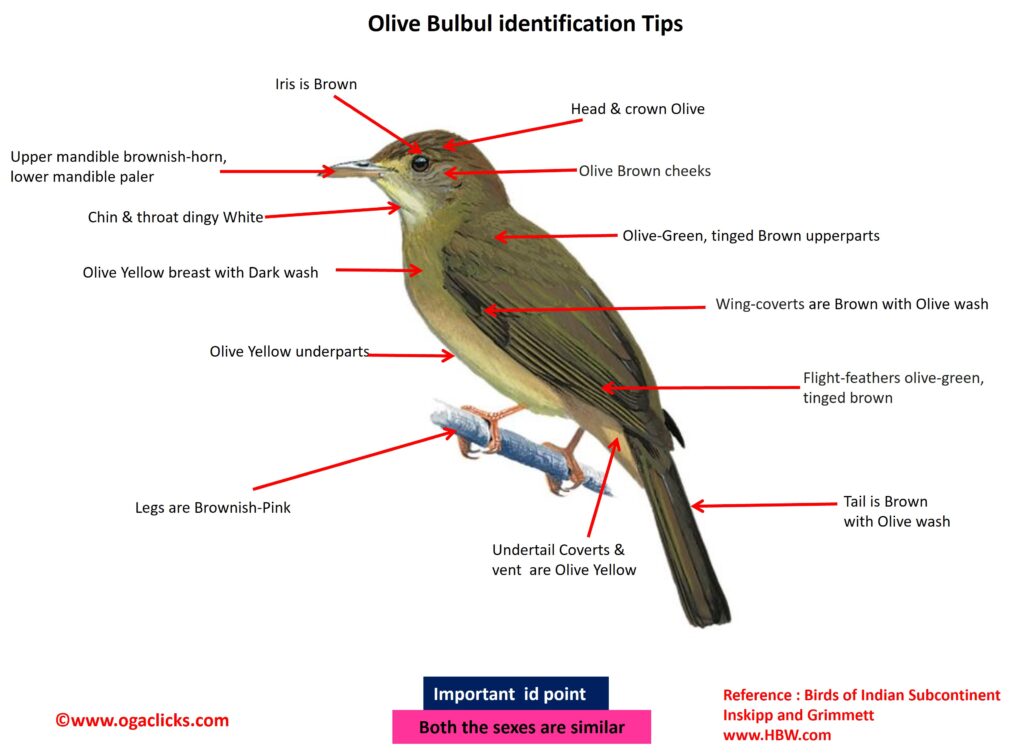
Cachar (Olive) Bulbul Iole virescens cacharensis
Etymology:
- Iole : Greek Mythology – Daughter of King Eurytus of Oechalia who was promised in marriage to Hercules
- Virescens: Latin for Greenish
- Cacharensis : From Chachar in Assam , India
Vernacular names : Cachar: Dao-bulip-gurrmo
Distribution in India: Resident of South Assam hills, extreme W Manipur, and Meghalaya
Description: Size of 19 cm. it is a small, drab bulbul. The nominate race has yellowish-olive side of head; ear-coverts generally appear paler than crown; crown and upperparts strongly tinged olive, underparts unstreaked olive-yellow; iris is reddish, brownish or greyish-pink; upper mandible is brownish-horn, lower mandible paler ,slightly bluish around gape; legs are brownish-pink. Both the sexes are alike. The juvenile is rustier on upperparts , wing and tail , with paler undertail-coverts. Race cacharensis is smaller and nearly uniform bronzy olive above, duller olive below with bright yellow on central throat and belly, slight cinnamon tinge on undertail-coverts
Habitat: It is found in moist broadleaf evergreen forest, semi-evergreen forest and tall secondary growth , often with dense shrub layer or dense growth of vines. It is found from lowlands to 1000 m, most often in foothills.
Food habits: It eats berries, sometimes insects. It is usually found in pairs or small parties. It forages in middle storey, tops of trees, and high bushes. It is shy and unobtrusive.
Breeding habits: They breed in Feb–Sept. The nest is a compact and cup-shaped structure, built with strips of inner bark, scraps of outer bark and fine twigs, lined with black fern roots and long fibres, usually a few dead leaves attached to outside with cobwebs, suspended between horizontal twigs or in vertical, in bush or low tree inside dense forest. They lay a clutch of 3 eggs.